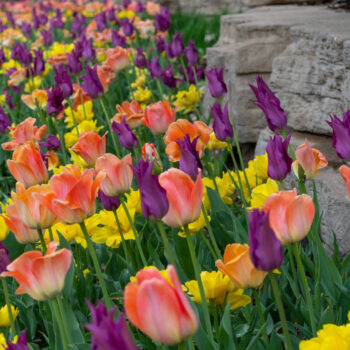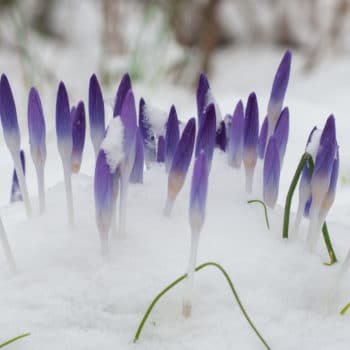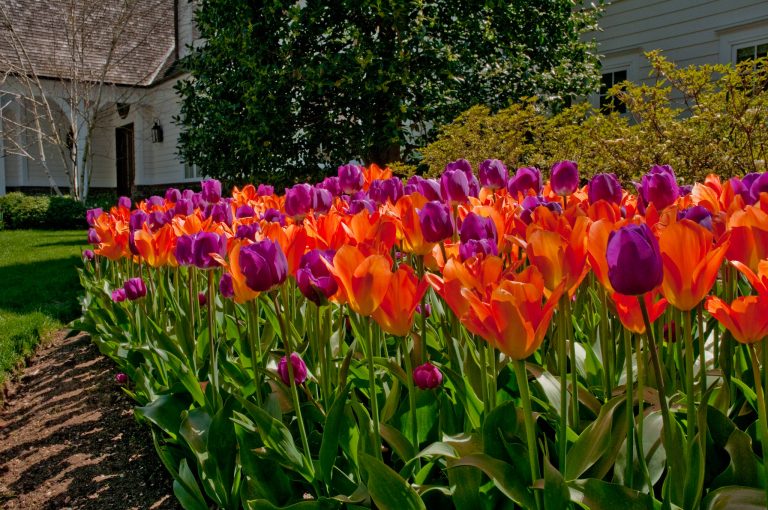
Stop the Car®
Tulips are among the most iconic of flowers. Everyone recognizes the classic goblet shape. Artists and graphic designers make liberal use of it—abstract, literal and romanticized in drawings, paintings, wallpaper patterns and advertisements. When you make a point of looking for tulips, you find them in lots of unexpected places.
All this veneration and objectification tends to obscure the fact that tulips are real flowers that are widely available, surprisingly affordable and invaluable for the color they provide in spring.
While the perennials are still awakening from their winter slumber, and well before it’s safe to think about planting summer annuals, tulips are up and flowering in a dizzying array of colors, shapes, heights and bloom times.
There are dainty wild tulips, big beefy doubles, svelte lily-shaped tulips on long stems and huge sturdy goblets that put the bunches of forced tulips at the grocery store to shame.
Red, yellow, pink, purple, orange, white—these form the basic palette. But you’ll also find citron, mauve, cherry, blush and ivory, often in combination on a single bloom.
Flowering ranges from early to late in a 4–6 week window that is wholly dependent on spring temperatures. Through careful selection, you can create a long-running pageant or a single explosion of color.
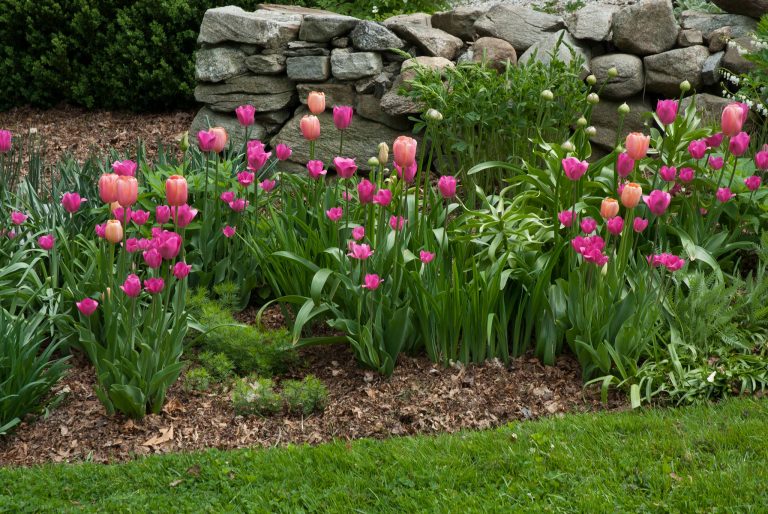
Sherbet®
Naysayers will complain that tulips do not make good perennials. There is no disputing this observation. While the wild, or species, tulips have a propensity to repeat for a spring or two, and certain classes of big hybrids (Darwin hybrids and fosterianas in particular) can flower reasonably well in Year 2, and perhaps Year 3, most tulips are at their best the first spring after planting.
That is the truth, that’s how it is.
But this apparent drawback can also be seen as an asset. When you treat tulips as annuals, you don’t have to watch them turn yellow and wither as they enter their summer dormancy. You don’t have to worry that they will be shaded out by trees, shrubs or neighboring perennials. You plant the bulbs in the fall, enjoy the extraordinary beauty of their flowers in the spring, and then pull them up to make way for the summer annuals or expanding perennials.
For the gardener, the real Achilles heel of tulips is that they are edible. They hold little appeal for people, but for a hungry deer, they are delectable. Voles (with a v not an m, moles are carnivores) can burrow down and make short work of the bulbs. The remedies for deer are well known (fencing, spraying), for voles much less so. Where control is impractical or impossible, the answer is easy: plant daffodils!
PUTTING TULIPS TO GOOD USE
Tulips, like any plant, can be used well or poorly. A single-file row of tulips spaced a foot apart is the classic example of how not to plant tulips. Here are some ways to use them effectively.
Big Bedding
A tulip planted on its own looks forlorn, no matter how beautiful its flower. Plant several bulbs close together and you feel a little electricity. Plant a dense mass of hundreds or thousands and your jaw will drop, your perception of time will shift, and cars will slow so their drivers can gawk at the astonishing beauty of the display.
Bedding is common in commercial settings, where the landscape architect typically designates spaces that are meant to be planted with seasonal flowers. The rotation begins (or ends, perhaps) with the planting of tulip bulbs in the fall.
The tulips are up early in spring, burst into bloom and are then replaced by summer annuals. The annuals are pulled in late summer or early fall and replaced by mums and ornamental cabbages and kales. With the arrival of hard frost, out go the cabbages and kales, and the cycle begins anew with the planting of a fresh batch of tulip bulbs.
The spring show in a large bed can be impressive, especially if the bed is planted with a blend rather than a single variety.
A large block of red or yellow or pink is perfectly nice and will certainly grab attention, but a carefully considered blend of two, three or more varieties adds interest and amperage to the display. It’s hard to articulate the effect that a blend can have. Let’s just say that a blend is way more than the sum of its parts.
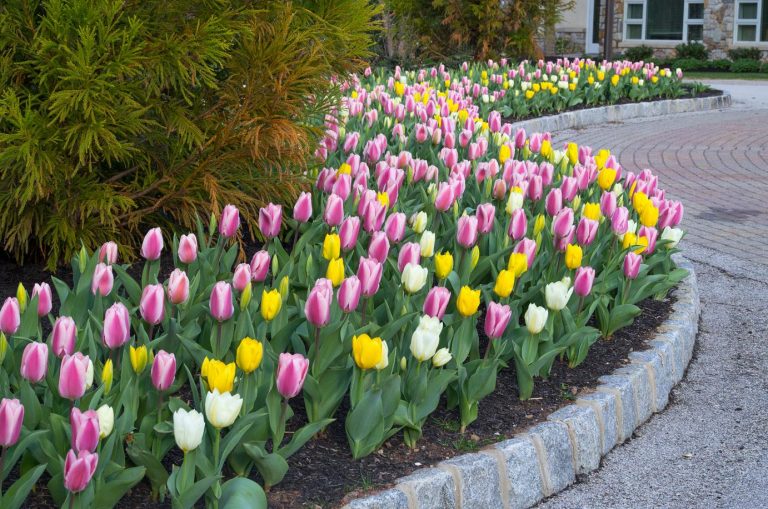
Pinkster™
Small-Scale Bedding
A commercial tulip planting can be large. It’s not unusual for a pair of beds flanking the entrance to an office building to swallow 2000, 3000, even 5000 bulbs. Such numbers will sound astronomical to most gardeners working on a residential scale, but bedding can also be in done in surprisingly small spaces.
To have a dense, full look, tulips should be planted 3”–4” apart, or 5-6 bulbs per square foot. Even closer spacing is possible and, some would argue, preferable. At 5 bulbs per square foot, 100 tulips will fill 20 sq. ft., or an area measuring 5’ by 4.’ At 6 bulbs per sq. ft., the space drops to about 16 sq. ft., which is the area of a square measuring 4.’
Now there’s a scale you can wrap your head around. How about a front-door planting, your own version of the corporate entrance? Do you have a mailbox? Why not dig a small bed there, if you don’t have one already? The island in the front yard that you fill with petunias in May? You can get double duty from the space by planting it with tulips for a great spring display.
When you put your mind to it, there are probably several spots in your landscape that would benefit from a dash, dollop or splash of spring color.
Border Decor
Most people these days use a variety of different types of plants in their gardens. Even if they have what they refer to as a perennial garden or border, it consists not just of perennials but also annuals, shrubs and bulbs. Because the list of spring-flowering perennials is short, and summer annuals can’t be planted until the risk of frost has passed, bulbs in general, and tulips in particular, are highly valued for their early bloom.
Space in a perennial garden is often tight, but the footprint of tulips is very small. After the perennials have been cut down in fall, the gaps between their crowns become evident. Tulip bulbs can be planted into those spaces. One technique is to plant the bulbs in tight clusters of 6 to 10, scattering the clusters here and there, as space allows. In the spring, you have a series of bouquets blooming among the emerging perennials. When you look down the garden (as opposed to head-on), you see a string of color.
You can also plant the bulbs individually or in pairs, poking them in wherever you can. The result, come spring, is a lighter, airier look, more like a constellation than a series of clusters. Lily-flowered tulips are especially effective in this scheme. When the sun hits them and their petals open wide, they appear to take up more space than they really do.
Either way, when the tulips are done, you have the option of leaving the bulbs in place and seeing what comes back the following spring or pulling them to clear the way for planting a completely different look in the fall.
Naturalistic Plantings
The tulips we know are the result of hundreds of years of hybridization and selection. They are big and beautiful, but they are clearly cultivated plants, lovely in a bed or border but out of place in a more natural setting. Their forebears are smaller and more delicate looking, though actually very tough, having evolved in arid mountains in Central Asia and the Near East, where they can still be found today.
Some of these wild, or species, tulips are grown commercially and are readily available. Their less formal look suits them to less formal situations. They look great in and among rocks, whether the rocks are boulders, stepping stones or gravel. They can also be planted in turf to make a flowering lawn. Of course, if you hope for flowers in your grass the following year, you must hold off on mowing until the tulip foliage yellows, signaling that the bulbs are shutting down for the summer.
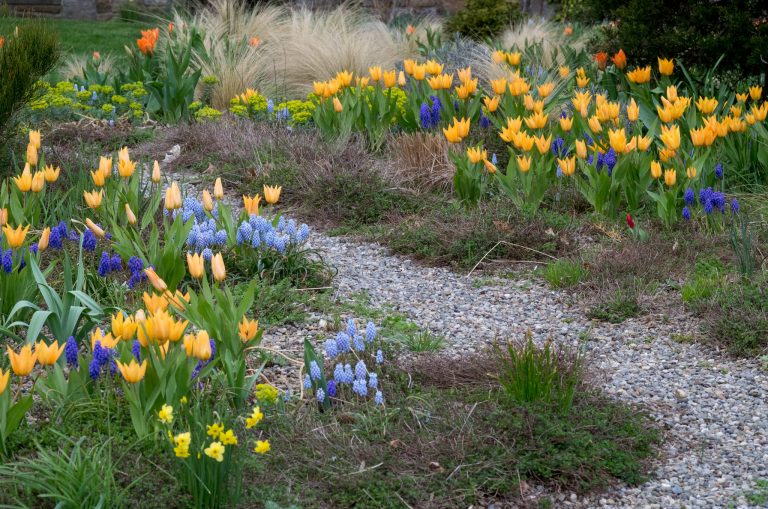
Praestans Shogun
The diversity of form and color and the early bloom that tulips offer make them useful and attractive in almost any landscape. No, they aren’t good perennials. And yes, the deer do love them. No plant is perfect. But where tulips are a viable choice, they have no rival. Nothing sings like a big planting of tulips in the spring.
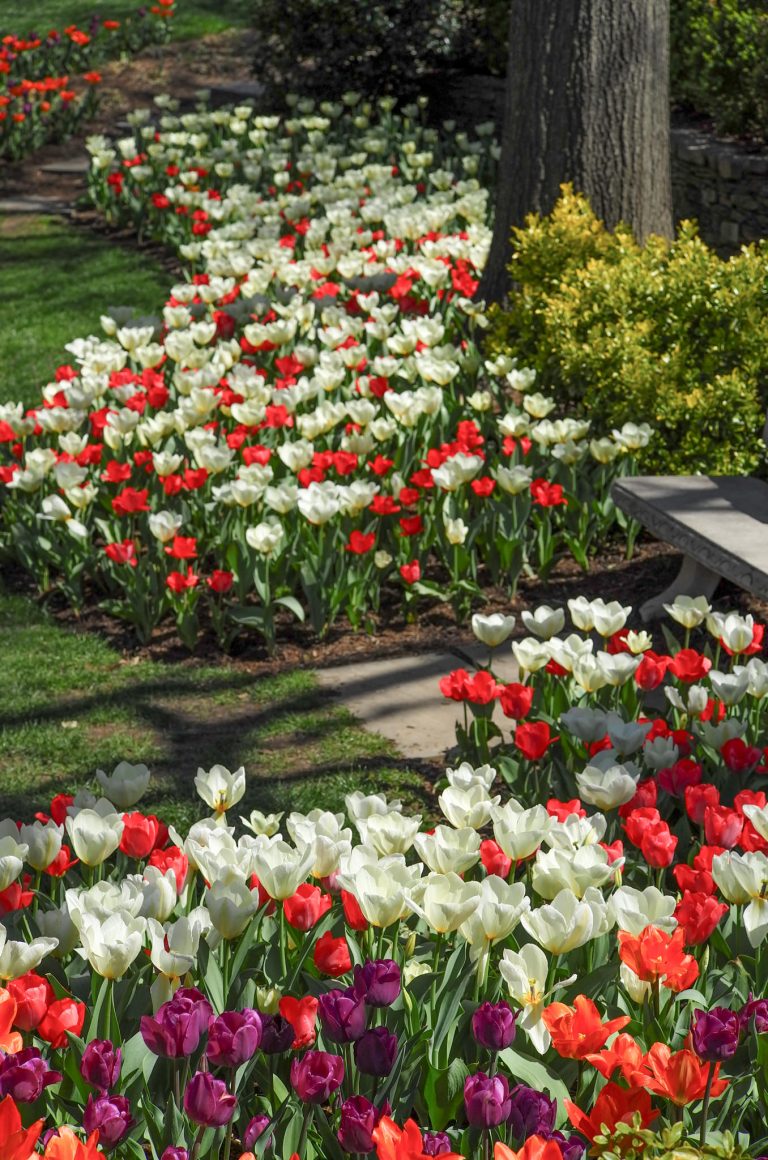
Miss Confection®
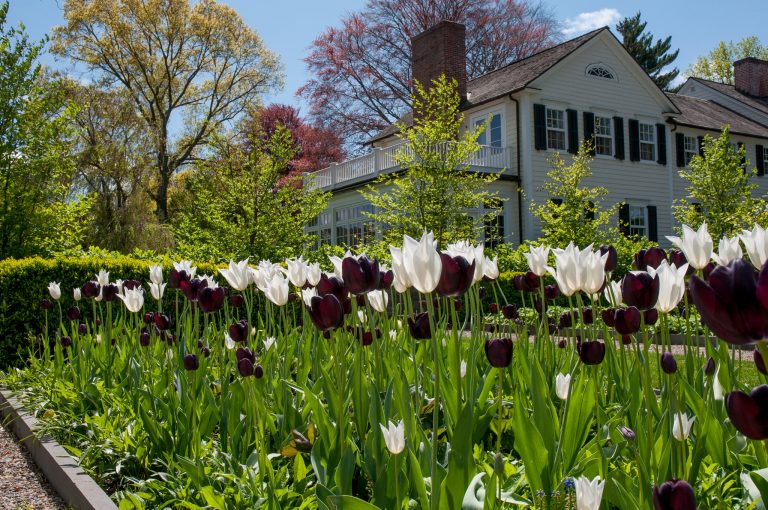
Black Tie™

